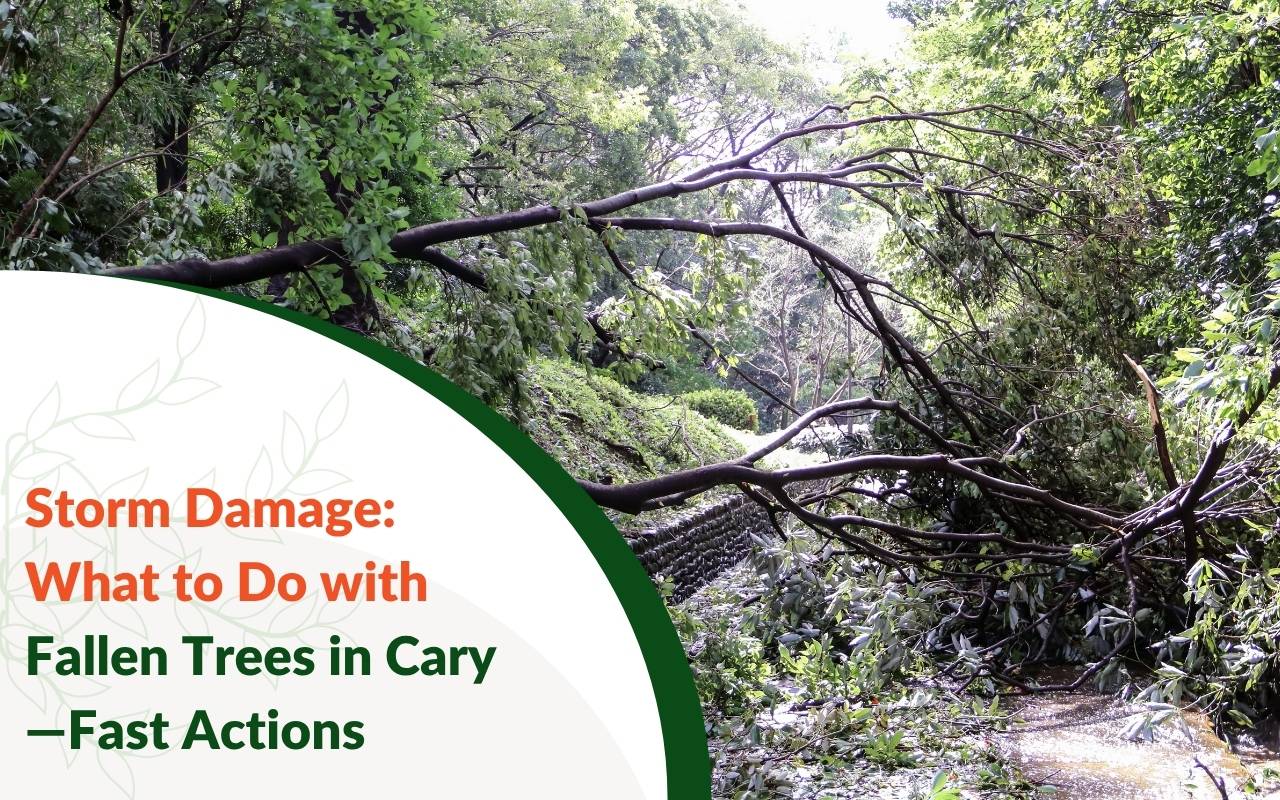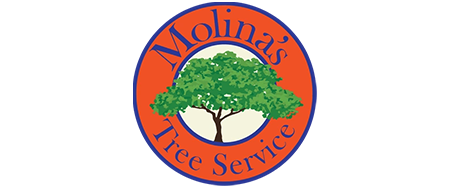
Witnessing the aftermath of a storm can be overwhelming. Trees can quickly transform from scenic landmarks into safety hazards. In Cary, understanding Storm Damage: What to Do with Fallen Trees in Cary is crucial for restoring order and safety. Whether assessing property damage or deciding when to call emergency services, each action matters. This guide provides key first steps after a tree falls on property, helping you stay safe and organized. Learn how to document storm tree damage for insurance, when to contact professionals, and how to secure your yard temporarily. With these strategies, you can handle fallen trees confidently while minimizing risks and restoring order to your property.
Assessing the Damage: Understanding the Extent of the Fallout
Start by surveying your property from a safe distance. Check for broken branches, downed power lines, or unstable tree limbs. This first step after storm damage ensures safety while identifying major risks. If you see power lines entangled in branches, stay at least 30 feet away and contact the utility company immediately.
Once the area is secure, inspect the tree’s roots and surrounding ground for upheaval or cracks. Document visible damage patterns, including nearby stressed trees or leaning trunks. Understanding the full extent of the fallout prepares you for insurance claims and professional evaluation related to Storm Damage: What to Do with Fallen Trees in Cary.
- Observe from a distance before approaching fallen trees.
- Use binoculars to inspect upper branches safely.
- Keep a record of all visible structural damage.
Documenting for Insurance: Ensuring Proper Coverage for Tree Damage
Thorough documentation supports successful insurance claims. Take clear, time-stamped photos from multiple angles, highlighting trunk fractures and damage to nearby structures. GPS-tagged images add credibility and simplify verification. Maintain written notes with size measurements and reference quotes from professional tree services to ensure you know how to document storm tree damage for insurance properly.
Collecting detailed evidence is key when tree removal after storm damage becomes necessary. Organize all materials into one digital folder, then email your insurance agent and follow up by phone. Quick documentation accelerates claim processing and ensures fair coverage, especially after Storm Damage: What to Do with Fallen Trees in Cary situations.
- Include both photos and written notes.
- Save all estimates and service receipts.
- Keep communication records with your insurer.
Calling Emergency Tree Services: When to Seek Professional Help
Some situations require professional response. Trees leaning on houses, blocking roads, or touching power lines are emergencies. Contact licensed experts immediately instead of attempting removal yourself. Knowing when to call emergency tree services helps prevent injury and property loss.
Certified arborists use specialized tools and safety gear to manage hazardous removals. They can stabilize trees, remove debris, and secure affected areas. During high winds or rain, wait for professionals rather than risking unsafe cleanup. Quick action ensures safety and prevents additional Storm Damage: What to Do with Fallen Trees in Cary.
Temporary Safety Measures: Securing Your Property Post-Storm
After ensuring safety, mark hazardous zones with bright tape or portable fencing. Label dangerous areas where limbs might shift or roll. Cover small holes with plywood to avoid trips. Clearing debris from walkways reduces slipping hazards while protecting your family and pets. Always maintain temporary yard safety around downed limbs until professionals arrive.
Keep children and pets indoors until the area is fully cleared. Temporary safety steps protect everyone on your property while waiting for professional assistance or equipment arrival. These quick measures keep risks manageable during the recovery period after Storm Damage: What to Do with Fallen Trees in Cary.
- Use safety cones or fencing around fallen branches.
- Clear debris from high-traffic zones.
- Secure exposed roots to avoid accidents.
Preventive Measures: Safeguarding Trees Against Future Storms
Prevention helps reduce future storm damage. Regular pruning eliminates weak branches and improves airflow. Work with a certified arborist to identify structural vulnerabilities early. Mulching around tree bases enhances root stability and moisture retention, strengthening trees for upcoming weather challenges. Practicing preventing future wind damage to trees ensures long-term landscape health.
When planting new trees, choose wind-tolerant species and ensure proper spacing. Schedule annual inspections to detect early signs of disease or decay. Preventive care not only protects your landscape but also saves money on potential cleanup after storms related to Storm Damage: What to Do with Fallen Trees in Cary.
Tree Removal Considerations: Weighing Your Options
After storm damage, deciding whether to remove a tree requires careful thought. Fully uprooted trees often have unstable roots that can cause further issues. Professional tree removal ensures safety and structural stability for nearby buildings.
If the tree can be saved, discuss cabling or bracing with an arborist. For remaining stumps, consider stump grinding or full extraction depending on your landscape goals. Before removal, review local Cary regulations, as certain permits may be required for large trees.
DIY Cleanup Tips: Handling Fallen Trees on Your Own
Always prioritize safety before starting any DIY cleanup. Equip yourself with gloves, goggles, and boots. Start trimming smaller branches first, working toward the trunk. This gradual method minimizes weight stress and prevents shifting during cuts.
Cut large logs into manageable sections for disposal or recycling. Organize debris piles for easy pickup. When using a chainsaw, follow all safety instructions closely. If the task feels overwhelming, pause and contact professionals for help instead of taking risks. Safety always comes first in Storm Damage: What to Do with Fallen Trees in Cary recovery efforts.
Frequently Asked Questions About Storm Damage and Fallen Trees
What should I do first after a tree falls during a storm?
Ensure everyone’s safety, keep clear of the area, and check for electrical hazards before inspecting the damage.
Yes, most homeowners’ policies cover this. Document everything and contact your insurer immediately.
When should I contact emergency tree services?
Call professionals if the tree blocks roads, touches power lines, or threatens structural integrity.
How can I prevent tree damage during future storms?
Regular pruning, proper planting distance, and choosing resilient species greatly reduce storm damage risks.
Is it safe to remove a fallen tree by myself?
Only small branches should be handled without help. Large or unstable trees require expert intervention.
Community Resources: Finding Support After a Storm
Residents in Cary can rely on the Storm Debris Collection program for organized pickup schedules. Local non-profits and neighborhood groups often assist with hauling branches or providing tools. These shared resources lighten the workload and support faster recovery after Storm Damage: What to Do with Fallen Trees in Cary.
Check community message boards for real-time updates or local equipment-sharing opportunities. Collaboration ensures smoother restoration and a safer environment for everyone involved.
Environmental Impact: Reimagining Your Landscape Post-Damage
Consider reusing healthy wood from fallen trees for garden borders or wildlife habitats. Repurposing materials reduces waste and supports biodiversity. When replanting, select native species adapted to Cary’s conditions to promote sustainable growth and resilience.
Enhancing your yard post-storm allows you to design for better airflow, drainage, and ecological balance. Transforming storm debris into purposeful landscaping contributes to a greener, revitalized outdoor space.
By acting decisively—assessing, documenting, and contacting experts—you can manage storm damage effectively. Temporary measures and preventive maintenance create a safer yard. Remember, you’re not alone in this process. For professional help, visit our contact page and connect with experienced specialists in Cary. With the right steps, you’ll turn post-storm challenges into opportunities for renewal and lasting safety.
